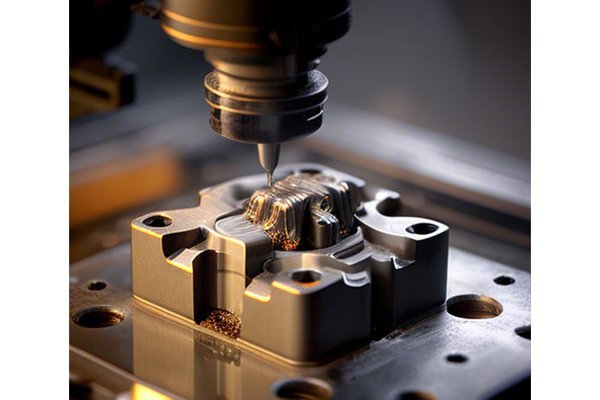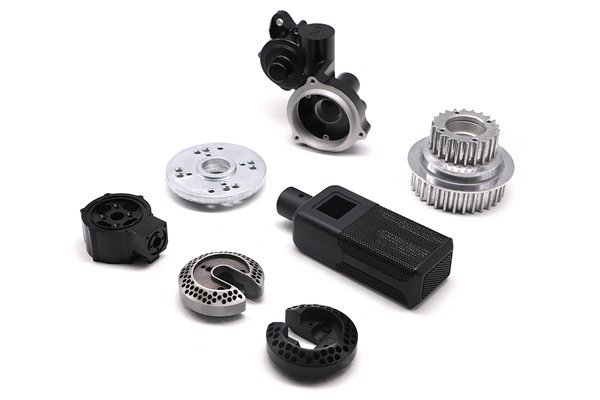Did you know that a significant portion of modern manufacturing relies on computer numerical control (CNC) machining? In fact, as of 2023, the global CNC machining market is projected to reach over $100 billion, growing at a compound annual growth rate (CAGR) of around 6%. This impressive statistic highlights just how essential CNC technology has become for manufacturers worldwide. With its ability to produce intricate designs with precision and efficiency, CNC machining stands at the forefront of the industry, shaping the future of manufacturing by enhancing production efficiency and product quality.
The Importance of CNC Machining in Modern Manufacturing
CNC machining is an automated manufacturing process that uses computer-controlled machines to create complex parts and components from a variety of materials, including metals, plastics, and composites. The ability to manipulate design files directly correlates with the potential for enhanced productivity and quality in production processes. So, how can manufacturers leverage CNC machining technology effectively? In this blog, we’ll delve into various aspects of CNC machining, exploring its advantages, operational processes, and valuable insights for improving efficiency and quality.
CNC machining transforms design ideas into tangible products by transmitting instructions to machines through G-code, a language that dictates machine movements. The technology is capable of various operations—milling, turning, drilling, and grinding—executing intricate designs and specifications with remarkable accuracy.
Types of CNC Machining Processes
CNC machining brings an array of benefits to the manufacturing sector, including:
2.1 Precision and Accuracy
Perhaps the most notable advantage of CNC machining is its unprecedented level of precision. Unlike manual machining, CNC machines can maintain tolerances as tight as ±0.005 mm. This precision is pivotal when creating components that must fit together seamlessly, particularly in industries like aerospace, automotive, and medical device manufacturing.
2.2 Enhanced Productivity
CNC machines work more quickly and consistently than human operators, which drastically reduces production time. For instance, a CNC milling machine can operate 24/7, only stopping for maintenance and tool changes.
2.3 Reduced Material Waste
CNC machining optimizes the material removal process, meaning less excess material is discarded during production. Advanced software simulations can anticipate how parts will be cut, allowing for strategic material placement that minimizes waste.
2.4 Flexibility and Customization
CNC technology allows for easy changes to design iterations without the need for new tooling or setups. This flexibility makes it a perfect option for businesses that need to produce small batches or custom products efficiently.
To harness the true potential of CNC machining, manufacturers must take a strategic approach to implementation. Here’s how:
3.1 Investing in Training
Proper training for machine operators is vital. Skilled operators who understand both the technology and the underlying principles of machining will be better equipped to make optimal decisions regarding setup, measurement, and operation.
3.2 Utilizing Advanced Software
Integrating modern CAD (Computer-Aided Design) and CAM (Computer-Aided Manufacturing) software can streamline the transition from design to production. Advanced software packages that integrate seamlessly with CNC machines can result in smoother workflows and reduced errors.
3.3 Regular Maintenance and Upgrades

To maintain high levels of productivity, CNC machines require regular maintenance and periodic upgrades to software and hardware. Implementing a routine maintenance schedule can mitigate downtime caused by unforeseen mechanical issues.
3.4 Implementing Lean Manufacturing Principles
Lean manufacturing principles—focused on maximizing value while minimizing waste—can be effectively combined with CNC machining. Continuous assessment of processes and workflows can highlight opportunities for efficiency improvements.
While efficiency is critical, quality must remain a top priority. Here’s how manufacturers can ensure high-quality outcomes through CNC machining:
4.1 Quality Control Systems
Incorporating robust quality control systems, including statistical process control (SPC) and automated inspection methods, helps identify deviations from desired specifications during production. This proactive approach ensures that quality is checked throughout the manufacturing process rather than solely at output.
4.2 Material Selection and Verification
Choosing the right materials is paramount. CNC machining quality is influenced by the properties of the chosen material; thus, verifying material specifications before production can alleviate common issues such as warping or dimensional inaccuracies.
4.3 Implementing Tolerance Standards
Employing precise tolerance standards based on the needs of each project can help maintain product quality. Different industries have varying tolerance requirements, and understanding these can guide effective machining practices.
4.4 Continuous Improvement
Establishing a culture of continuous improvement ensures that quality practices are not static. Regularly reviewing machining processes, quality metrics, and operator feedback can uncover opportunities for enhancements that positively impact quality.
Now that we’ve explored the mechanisms and strategies of CNC machining technology, let’s illustrate its impact through real-world case studies.
5.1 Case Study 1: Aerospace Component Manufacturing
In an aerospace manufacturer, implementing CNC machining technology resulted in a 30% reduction in production time for critical engine components. By transitioning from manual machining to CNC, they achieved tighter tolerances with improved consistency, ensuring safety and reliability—paramount in this industry.
5.2 Case Study 2: Medical Device Production
A medical device supplier discovered that utilizing CNC machining allowed them to produce complex surgical instruments with intricate design features without compromising quality. Automated inspections and CAD integration improved turnaround times by 25%, enabling them to respond to market demands rapidly.
5.3 Case Study 3: Automotive Industry Enhancements
An automotive parts manufacturer has realized significant cost savings by implementing CNC technology. By adopting lean manufacturing practices alongside advanced CNC machining methods, they reduced scrap rates by 15%, translating to substantial financial benefits.
The interdependence of efficiency and quality in CNC machining cannot be overstated. Manufacturers must continually seek to balance these objectives, ensuring that one does not come at the expense of the other.
: Embracing the CNC Machining Revolution
In conclusion, CNC machining technology represents a revolution in manufacturing. Its ability to improve production efficiency while maintaining high standards of product quality is unparalleled. From precise machining and waste reduction to advanced software utilization and rigorous quality controls, manufacturers can optimize their processes to gain a competitive edge.
As we move forward into an era characterized by rapid technological advancement, the significance of CNC machining cannot be neglected. It is imperative for manufacturers not only to adopt these technologies but also to think critically about how to enhance their operations for maximum effectiveness.
Remember, whether you’re a small custom shop or a large-scale manufacturer, the principles of CNC machining can empower your production capabilities. By understanding and implementing the information discussed in this blog, you can drive your manufacturing processes to new heights. Let’s embrace the CNC revolution and lead our industries into a future filled with endless possibilities.






